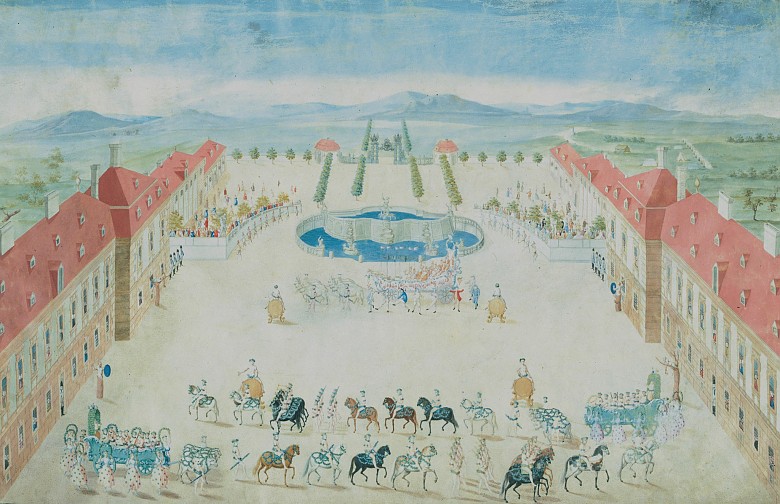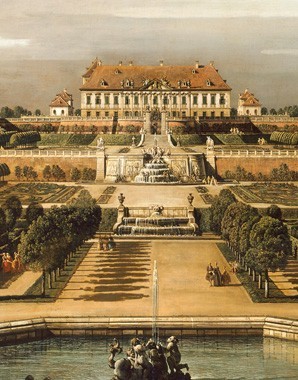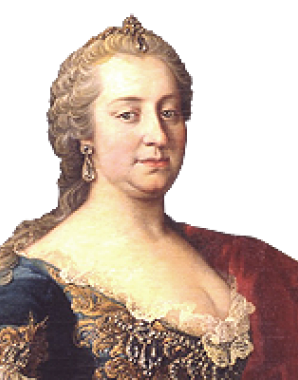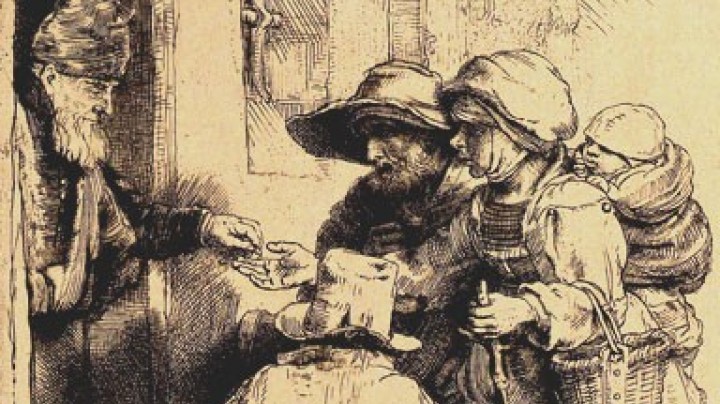Schloss Hof – aristocratic country residence and Habsburg family palace
Where once Prince Eugene recovered from the stresses and strains of life as a military commander, Maria Theresa sought tranquillity as a widow in the final years of her life. Following decades of neglect, thanks to the extensive renovation work undertaken in recent years, once more Schloss Hof ranks among the most important palace complexes of the eighteenth century in central Europe.
On the vast plain of the Marchfeld, situated to the east of Vienna, Prince Eugene created a quintessential aristocratic country estate, with the dominant palace rising at its centre. Beside it stands the extensive complex of the Meierhof (Manor Farm), a clear indication of the fact that land ownership constituted the economic foundation of the nobility as well as a sign of the ordinary economic activity undertaken by the noble landlord. However, it was the splendid gardens, in the form of a Baroque terrace arrangement, which aroused the greatest admiration. Structured according to the exacting requirements and eclectic taste of their owner, they stood in sharp contrast to the untamed wetland forests of the surrounding landscape.
In 1754, Schloss Hof was the venue for a spectacular festival given in honour of Maria Theresa and Franz Stephan aimed at showing them the attributes of the estate, for Prince Eugene’s heirs were hoping that the imperial couple would buy the property. The festival lasted three days, and highlights included a trip in festively-decorated boats on the River March to musical accompaniment, as well as a Venetian water carousel on the surrounding lakes, where guests were carried in gondolas to a Lusthaus (summer house) on an artificial island. The imperial couple were seen off with a Bacchanalian procession involving the rural population, underlining the joys of country life.
The plan succeeded, and henceforth Schloss Hof stood at the focus of the private Habsburg estate complex which was taking shape in the Marchfeld. Following the death of Franz Stephan, Maria Theresa began work on extending the palace, since she proposed setting up Schloss Hof as her dower residence. The imperial widow’s apartments constitute a unique ensemble of courtly residential decoration in the Josephinian style. The cycle of family portraits showing the empress's children as adults, plus sons- and daughters-in-law and grandchildren, is indicative of Maria Theresa’s family politics. Here, formal dynastic aspiration is combined with the display of private family ties, as expressly desired by the ageing empress.
Following the death of Maria Theresa, the imperial family’s interest in Schloss Hof ended, the complex was increasingly neglected, and finally, in 1898, it was reassigned for military use. However, before then, the original state of the palace was well documented, and this enabled the comprehensive reconstruction work which took place from 2002.

















